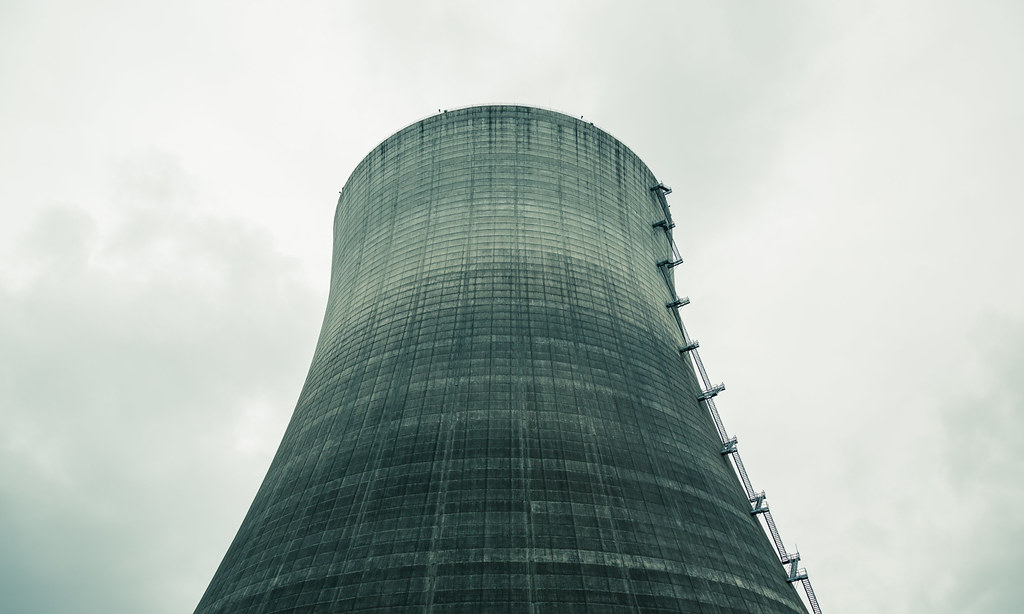|
By Kyle Warner
Nuclear power generation stems from the process of splitting uranium-235 atoms, otherwise known as nuclear fission. When an atom undergoes fission, a significant amount of energy is released in the form of heat, which can then be used to produce steam that spins a turbine and produces electrical energy. Despite the relative simplicity and efficiency of this process, the word “nuclear” still comes with many negative connotations: power plant meltdowns, long-term nuclear waste, disease from radiation exposure, and potential warfare applications. Although these consequences should all present significant cause for concern, a closer look into the science behind nuclear suggests a safe, sustainable future for the power source. Chernobyl (1986) and Fukushima (2011) are the two most significant power plant meltdowns in recent memory. Despite media portrayal of significant radiation from these events, the total amount of ionizing radiation from the Chernobyl and Fukushima accidents, combined with the radiation from atomic bomb testing in the 60s and 70s, totals just 0.3% of global surface radiation. This is because most of the radiation we experience comes directly from the Earth, atmosphere, and buildings that surround us. For example, Colorado experiences more net annual radiation than the surrounding areas of Chernobyl and Fukushima as a result of low atmospheric shielding and high concentrations of natural uranium in the ground. Additionally, the meltdowns at Chernobyl and Fukushima have shown no direct evidence of impacts on fertility, birth defects, or infant mortality. There is no correlation between the radiation and any form of cancer except for thyroid cancer, commonly perceived as one of the most treatable forms. Of the fifteen deaths caused by thyroid cancer from the Chernobyl accident, the majority were from residents of rural areas without access to proper treatment. In addition to the limited risk associated with the radiation, a comparison of nuclear power with other common energy sources further suggests that nuclear has the advantage. Contrasting the energy produced by equivalent mass of different materials paints a clear picture: one kilogram of coal can produce 8 kWh of electricity, one kilogram of oil can produce 12 kWh, and one kilogram of uranium-235 can produce 24,000,000 kWh! For reference, a single consumer in the United States requires approximately 10,766 kWh of electricity per year. A quick back-of-the-envelope calculation shows that one kilogram of uranium-235 can provide energy for almost 2,250 United States residents a year while an equivalent mass of coal or oil would fail to simply meet the needs of a single resident. Nuclear power also generates zero greenhouse gas emissions, whereas the burning of fossil fuels releases significant amounts of air pollutants and greenhouse gases such as carbon dioxide and methane which are the primary culprits behind climate change. While renewable sources such as solar and wind are effective at limiting greenhouse gas emissions, the efficiency of energy production pales in comparison to nuclear as they require significantly more land for a similar output and are intermittent supplies (the Sun is not always shining and the wind is not always blowing). Although battery storage would allow for solar and wind to produce constant energy and is a rapidly growing field that should continue to be developed, there remain significant hurdles to achieving complete reliance on renewables. There are many countries in support of the development of sustainable nuclear power for the future. The Generation IV International Forum (GIF) is a coalition of fourteen countries, including the United States, who share the common goal of carrying out the research needed to establish performance capabilities for the next generation of nuclear power systems. Of the hundreds of nuclear reactor designs presented to the GIF, six were selected as the basis for future development based on the following sustainability standards: reducing the amount of time waste remains radioactive from millennia to centuries, improving energy yield by operating at higher temperatures, increasing the variety of fuels used in operation, allowing for the reuse of nuclear waste as fuel, and eliminating applications for weapons technologies. These six reactor designs fall into two general categories, thermal reactors and fast reactors, and as a group are effectively known as Generation IV reactors. The human error that contributed to the incidents at Chernobyl and Fukushima would be effectively eliminated in these Generation IV reactors through an automatic shutdown system to be initiated in cases of emergency. The GIF intends to have these reactors deployed commercially between 2030-2050 depending on their varying degree of technical maturity. Despite the promise these reactors show as an end-all solution to the energy crisis, it remains a necessity to continue the growth of renewable energy sources to displace fossil fuels and limit climate change-inducing greenhouse gas emissions while Generation IV reactors are being developed. If renewables maintain their positive trajectory and the commercialization of Generation IV reactors is a success, the future of energy will have eliminated greenhouse gas emissions and see significant improvements in both efficiency and safety standards.
0 Comments
Leave a Reply. |
Categories
All
Archives
April 2024
|

